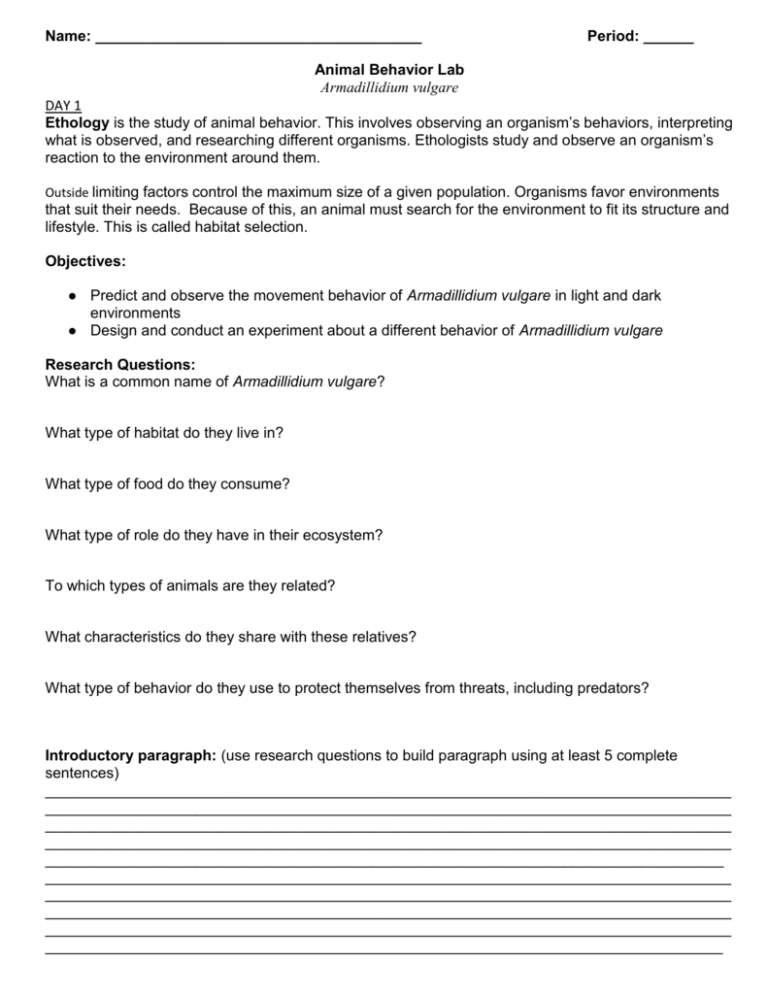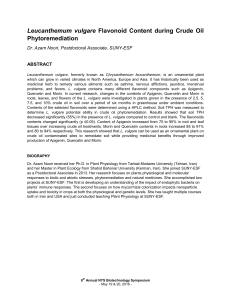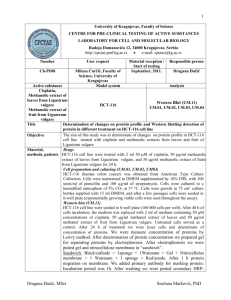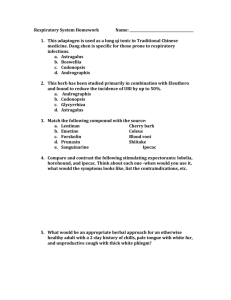Pillbug Lab
advertisement

Name: _______________________________________ Period: ______ Animal Behavior Lab Armadillidium vulgare DAY 1 Ethology is the study of animal behavior. This involves observing an organism’s behaviors, interpreting what is observed, and researching different organisms. Ethologists study and observe an organism’s reaction to the environment around them. Outside limiting factors control the maximum size of a given population. Organisms favor environments that suit their needs. Because of this, an animal must search for the environment to fit its structure and lifestyle. This is called habitat selection. Objectives: ● Predict and observe the movement behavior of Armadillidium vulgare in light and dark environments ● Design and conduct an experiment about a different behavior of Armadillidium vulgare Research Questions: What is a common name of Armadillidium vulgare? What type of habitat do they live in? What type of food do they consume? What type of role do they have in their ecosystem? To which types of animals are they related? What characteristics do they share with these relatives? What type of behavior do they use to protect themselves from threats, including predators? Introductory paragraph: (use research questions to build paragraph using at least 5 complete sentences) __________________________________________________________________________________ __________________________________________________________________________________ __________________________________________________________________________________ __________________________________________________________________________________ _________________________________________________________________________________ __________________________________________________________________________________ __________________________________________________________________________________ __________________________________________________________________________________ __________________________________________________________________________________ _________________________________________________________________________________ DAY 2 Materials: 6-10 Arm. vulgare, 1 animal behavior choice chamber,1 petri dish, 2 paper towel circles, 1 camel’s hair brush, timer (on phone is ok) What to do: 1. Gather required materials 2. Place the 6-10 Arm. vulgare into a petri dish. Draw a sketch of them, describe what they look like (labeling the head and tail), their interactions with each other, and their movement within the petri dish. Do Not prod or push them around. We want to observe their "natural" behavior. Pill Bug Sketch: Describe what an Arm. vulgare looks like, how they move around and interact with each other: What to do (guided inquiry): Based on your research, predict whether the Arm. vulgare will choose the wet or dry environment and explain your prediction. What do you think will happen? Why? What to do 1. Dampen, but not soak, one of the circles of paper. 2. Place two circles of paper into the choice chamber you have (one on each side). 3. With a paint brush or a pencil eraser, carefully place 5 Arm. vulgare on one paper and five on the other. 4. Every 30 seconds count and record the number of Arm. vulgare in each chamber as well as noting what they are doing. (Quantitative and qualitative data) 5. Do this for 10 minutes, even if the Arm. vulgare aren't moving. 6. When you are done, return the Arm. vulgare to the petri dish. Clean off all other materials and return them to the center lab table. Data: Movement of Arm. vulgare in Wet and Dry Environments Time (minutes : seconds) 0:00 0:30 1:00 1:30 2:00 2:30 3:00 3:30 4:00 4:30 5:00 5:30 6:00 6:30 7:00 7:30 8:00 8:30 9:00 9:30 10:00 # of Arm. vulgare on wet side # of Arm. vulgare on dry side What are Arm. vulgare doing? Graph the number of Arm. vulgare in the wet and dry environments: Key Graph Title: ______________________________________________________________________ What does your graph tell you about which environment the A. vulgare prefer? How do you know? DAY 3 What do you want to do (open inquiry)? What questions came to you as you completed your studies of the A.vulgare? Now that you are familiar with their behavior, design an experiment to test one of your questions. Questions may involve observing if A. vulgare prefer an acidic vs. basic environment, a dark vs. light environment or any other test for which your teacher has supplies. Open Inquiry: Purpose (what are you testing?): Prediction (what do you think will happen? why?): Materials: Procedure: Teacher signature for approval: __________________ DAY 4 Data: Movement of Arm vulagare in _________________and ________________ environments. Set up Data Table on this page. Graph the number of Arm. vulgare in the ___________ and ____________ environments: Key Graph Title: ______________________________________________________________________ What does your graph tell you about which environment the A. vulgare prefer? How do you know?









